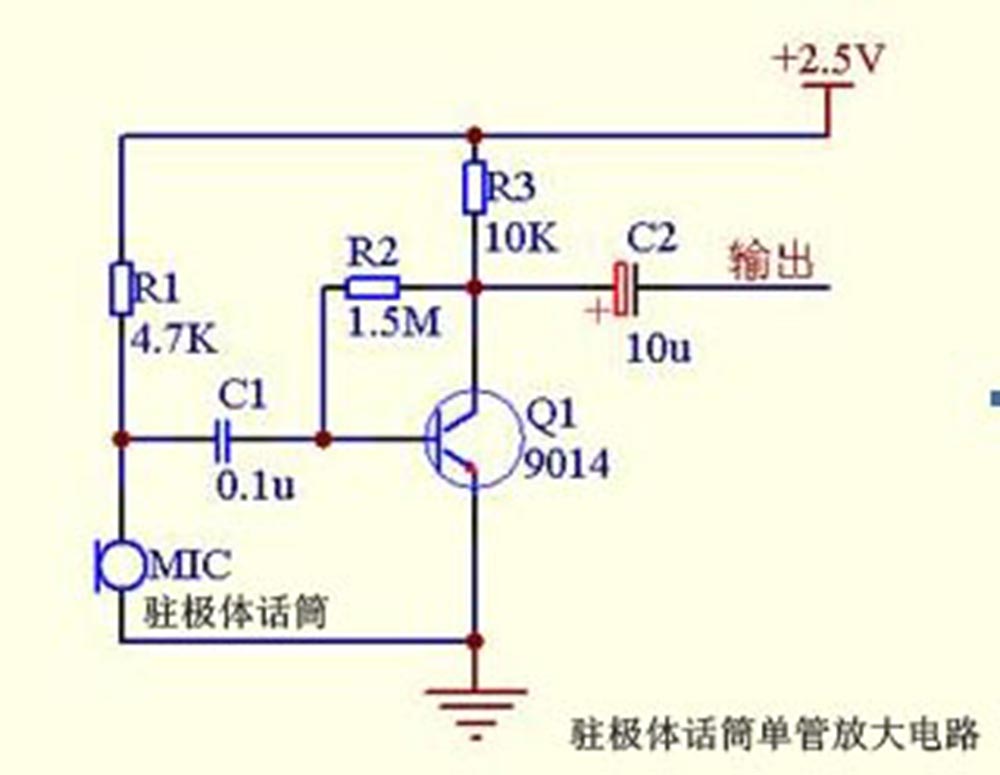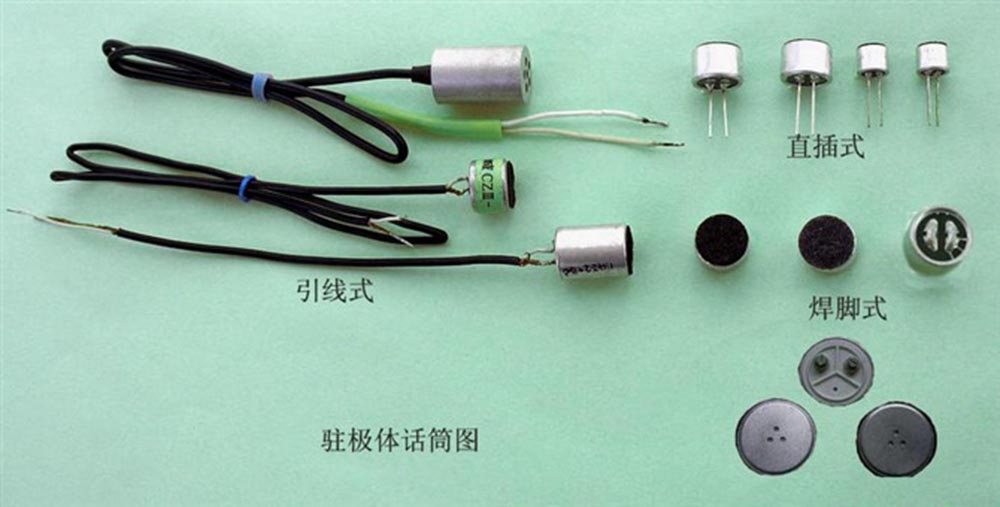The electret microphone is also called a condenser microphone. The principle is: the inside is composed of a FET and a metal diaphragm. The sound causes the metal diaphragm to vibrate. Because of its unique internal structure, the FET outputs the corresponding voltage. Most of the telephones are electret microphones.
An electret microphone, also known as an electret microphone, is a special capacitive "acoustic-electric" conversion device made of an electret material. It is a sensing element that converts sound into a corresponding electrical signal. It is characterized by small size, simple structure, good electroacoustic performance and low price. It is widely used in cassette recorders, wireless microphones and voice control circuits.
First, the classification of electret microphones
Commonly used electret microphones are available in the form of extensions (ie built-in) and external models. The machine-mounted electret microphone is suitable for installation in various electronic devices, and its appearance is shown in Figure 2(a). The common machine-mounted electret microphones are mostly cylindrical in shape, and their diameters are φ6mm, φ9.7mm, φ10mm, φ10.5mm, φ11.5mm, φ12mm, φ13mm... a variety of specifications; Both the three-terminal type and the lead type are three types of lead-in type, lead-through type with soft shielded wire and solderless type without lead wire which can be directly soldered on the circuit board. For example, according to the size of the size, there are two types of ordinary and miniature, miniature electret microphones have been widely used in a variety of micro-recorders, digital cameras, mobile phones and other electronic products.
2. Main parameters
The parameters that characterize the performance of the electret microphone are as follows:
(1) Operating voltage (UDS). This is the minimum DC operating voltage that must be applied across the microphone when the electret microphone is operating normally. This parameter varies depending on the model. Even the same model has a large dispersion. Usually, the typical values given by the manufacturer are 1.5V, 3V and 4.5V.
(2) Operating current (IDS). This refers to the DC current that the electret microphone passes when it is static. It is actually the quiescent current of the internal FET. Similar to the operating voltage, the dispersion of the operating current is also large, usually between 0.1 and 1 mA.
(3) Maximum operating voltage (UMDS). This refers to the maximum DC voltage that can be tolerated by the FET inside the electret microphone and at both ends of the source. When the limit voltage is exceeded, the FET will be damaged by breakdown.
(4) Sensitivity. This refers to the magnitude of the audio signal voltage that the microphone can produce under a certain external sound pressure. The unit is usually mV/Pa (millivolts/Pascal) or dB (0dB=1000mV/Pa). Generally, the sensitivity of an electret microphone is in the range of 0.5 to 10 mV/Pa or -66 to -40 dB. The higher the sensitivity of the microphone, the greater the amplitude of the audio signal output under the same amount of sound.
(5) Frequency response. Also known as the frequency characteristic, it refers to the characteristic that the sensitivity of the microphone changes with the change of the sound frequency, which is usually expressed by a curve. In general, when the sound frequency exceeds the upper and lower limits given by the manufacturer, the sensitivity of the microphone will drop significantly. The frequency response of the electret microphone is generally flat. The frequency response of the common product is better (ie, the sensitivity is more balanced) ranging from 100 Hz to 10 kHz, the better quality microphone is 40 Hz to 15 kHz, and the high quality microphone is up to 20 Hz to 20 kHz.
(6) Output impedance. This refers to the AC impedance of the output of the microphone at a certain frequency (1 kHz). The electret microphone is impedance-transformed by an internal FET, and its output impedance is typically less than 3kΩ.
(7) Inherent noise. This refers to the noise signal voltage that the microphone outputs when there is no outside sound. The greater the inherent noise of the microphone, the greater the noise mixed in the output signal during operation. The intrinsic noise of a typical electret microphone is very small and is a microvolt level voltage.
(8) Directivity. Also called directionality, it refers to the characteristic that the sensitivity of the microphone changes with the incident direction of the sound wave. The directivity of the microphone is divided into three types: unidirectionality, bidirectionality and omnidirectionality. The front side of the unidirectional microphone is significantly more sensitive to sound waves than other directions, and can be subdivided into three types: heart shape, supercardioid shape and super direction shape according to the shape of the directional characteristic curve; sensitivity of the bidirectional microphone in the front and rear directions Both are higher than the other directions; omnidirectional microphones have substantially the same sensitivity to sound waves from all directions. The most commonly used machine-mounted electret microphones are omnidirectional microphones.
Third, the application diagram

Electret microphone amplification circuit diagram
Fourth, various models of pictures

Various shapes and sizes of microphones
 CN
CN
 EN
EN
 CN
CN
 EN
EN
 CN
CN
 EN
EN







